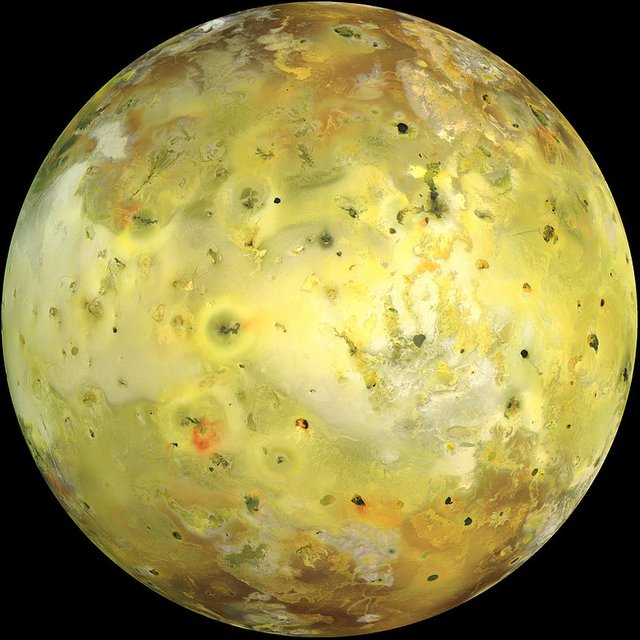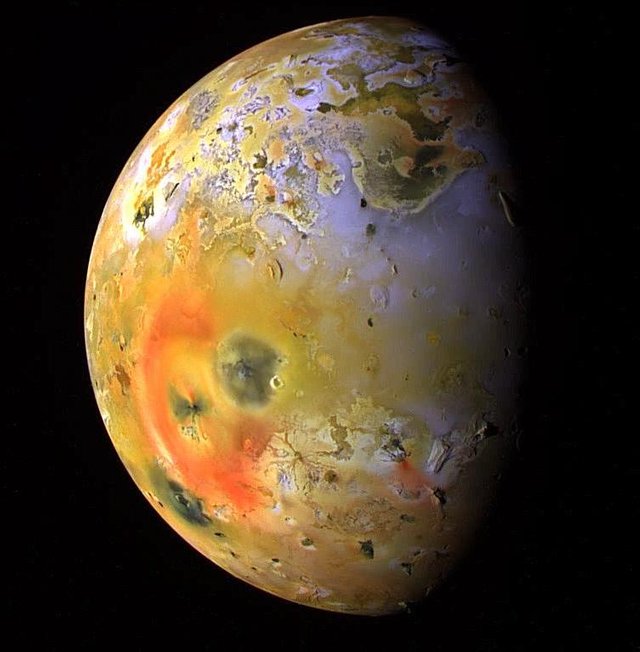Io: Satellite of Jupiter

Galileo spacecraft true-color image of Io. Image credit: NASA
Io was the first moon of Jupiter discovered by Galileo Galilei, next to Europe, Ganymedes and Calisto. They are what we call the Galilean Moons, in their honor. It is the fourth largest satellite in the Solar System (behind Ganymedes, Titan and Callisto, and just ahead of the Moon) and stands out, among other things, for being the celestial object known in our system, drier than we have Found so far, as well as the most active volcanically.
Like the rest of Galilean Moons, Io was discovered by Galileo Galilei in January 1610 with the help of a telescope designed by himself. Curiously, he was not able to distinguish it from Europe in the first instance because of the low resolution capacity of his telescope and believed that it was only a single celestial object. The next day however, he saw that there was not a single point of light, if not two.
The moon of Jupiter Io is 778 million kilometers from the Sun. Except for its volcanic sector which is hot, the surface temperature of Io is below the freezing point of the water. The instruments aboard the Galileo space probe measured infrared energy emitted by the volcanic zone. It has been found that Io has at least 12 active volcanoes, which erupt lava at a temperature of more than 1200 degrees Celsius.
Io has a diameter of 3,642 kilometers (compared to 3,474 kilometers of the Moon). It has a size equivalent to 0.286 times that of Earth, and only 0.015 times its mass. It orbits around Jupiter at an average distance of 421,700 kilometers, similar to that separating the Moon from Earth (which is about 384,400 kilometers on average).
More details here: Io

Enhanced-color Galileo image. Image credit: NASA

These are wonderful pictures of Io with great resolution and color. Thanks jonathanxvi! 😊
:D